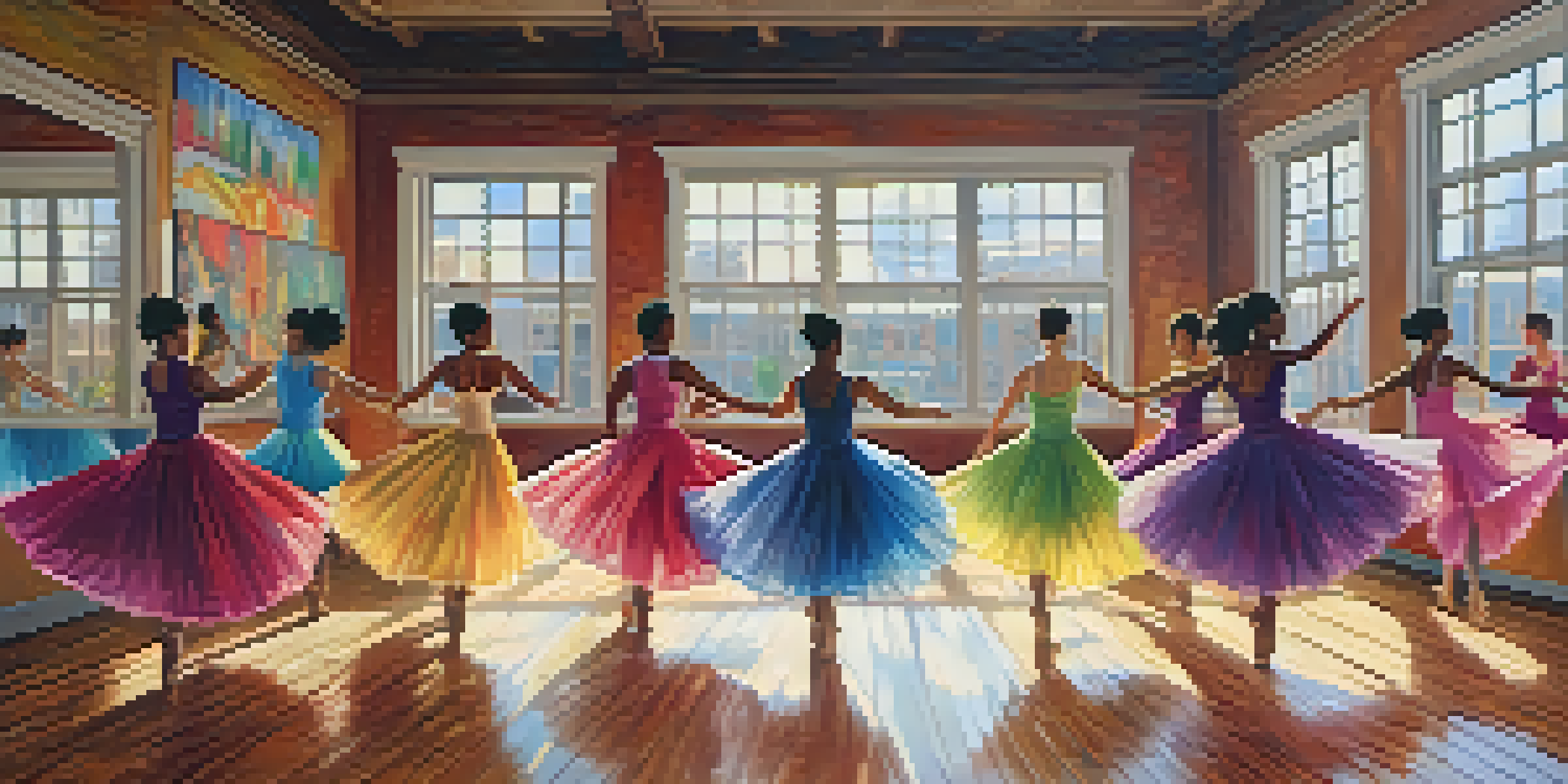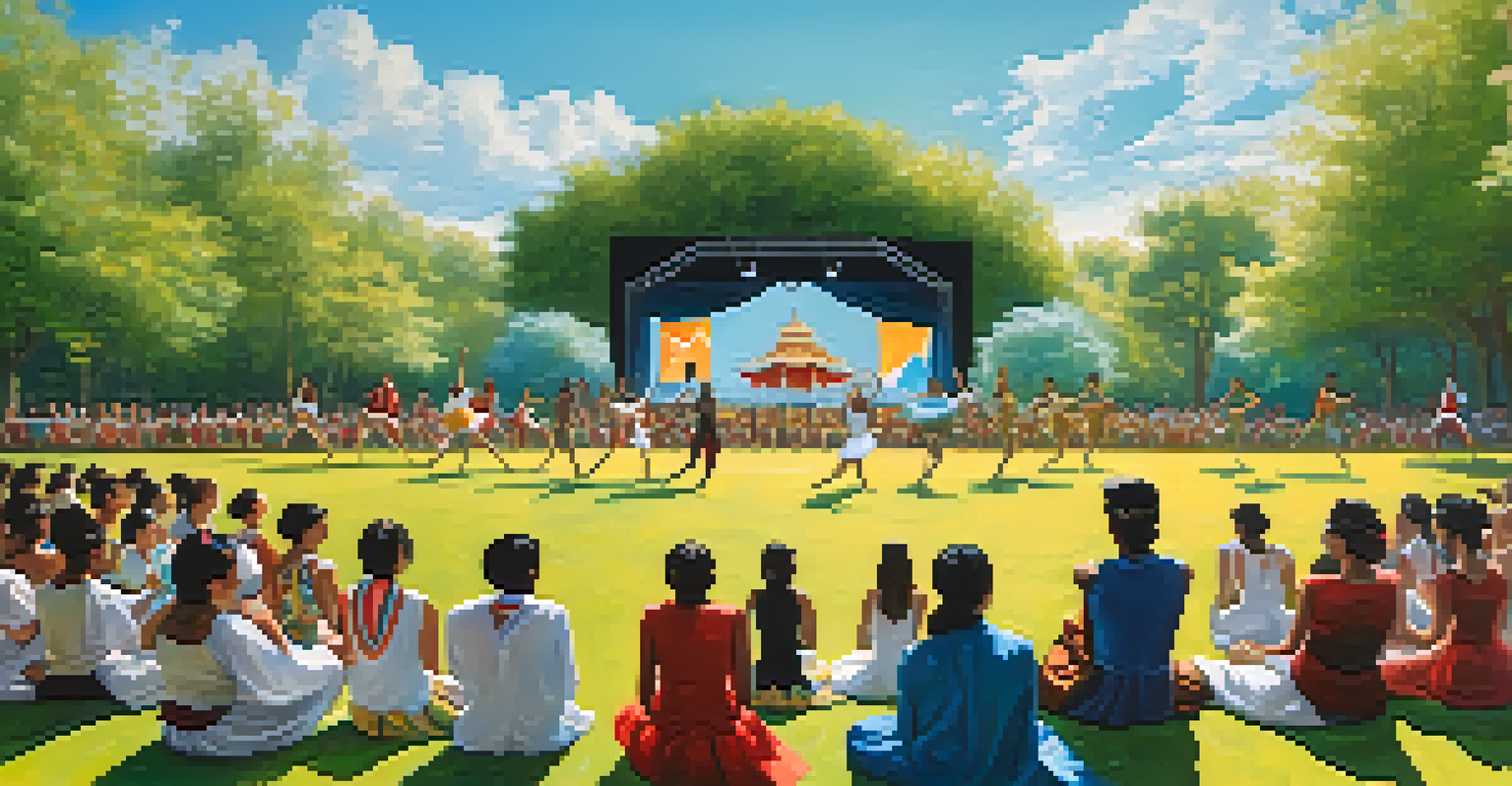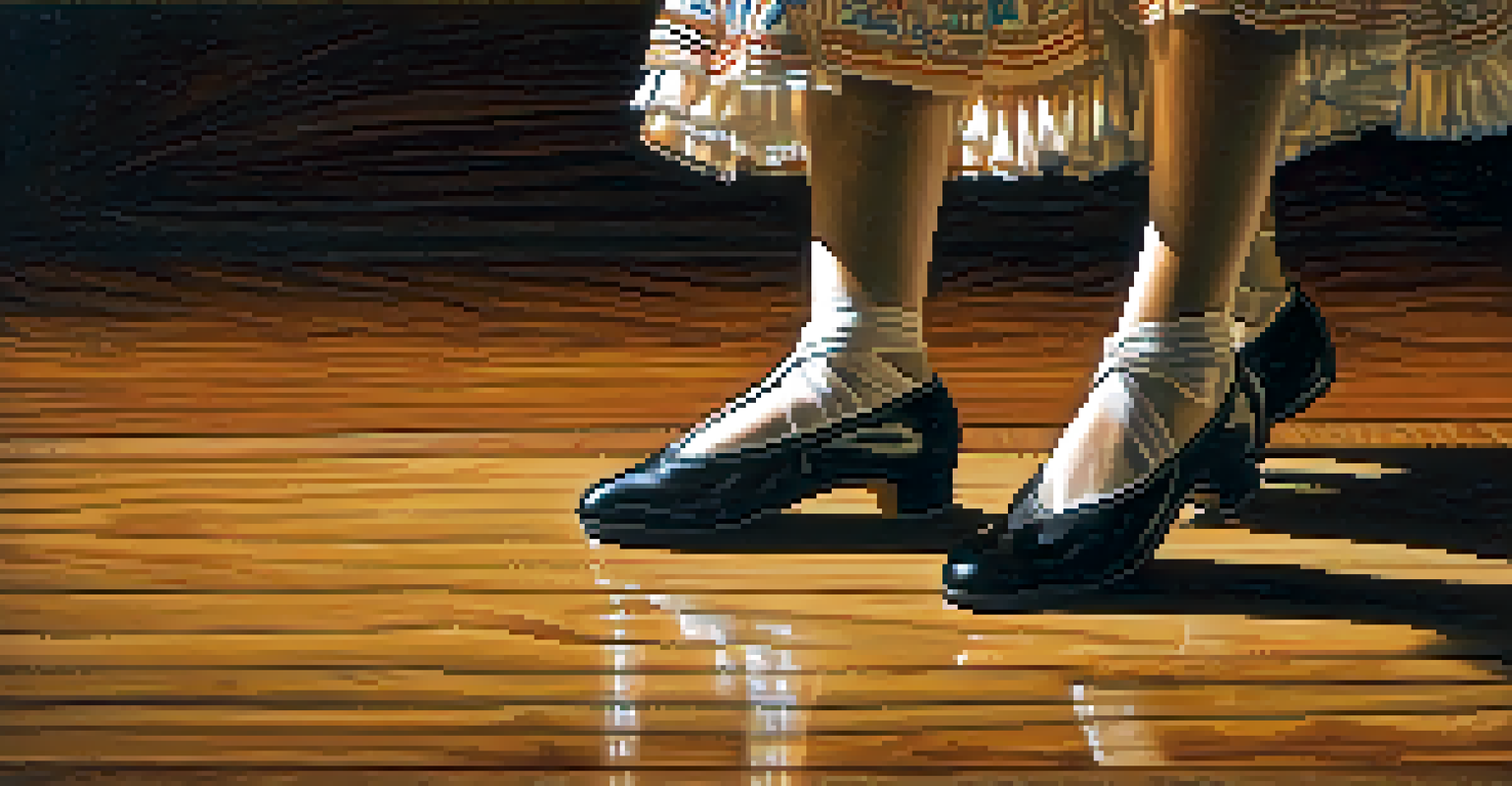Understanding Cultural Appropriation in Dance Forms Today

Defining Cultural Appropriation in the Dance World
Cultural appropriation refers to the act of taking elements from one culture by members of another, often without understanding or respecting the original context. In dance, this can manifest when artists adopt styles from cultures that are not their own, sometimes leading to controversy. The key issue here is often the lack of acknowledgment of the cultural significance behind these movements.
Cultural appropriation can be seen as a way of commodifying the culture of marginalized groups without understanding or respecting its significance.
For instance, a popular dance trend might draw heavily from traditional forms, but if the origins are ignored, it can feel exploitative. This is particularly sensitive in dance, where movements can carry deep historical and emotional weight. Understanding these nuances is crucial for both performers and audiences alike.
Many dancers advocate for a respectful exchange of cultural practices, emphasizing the importance of learning and honoring the origins. By recognizing where a dance form comes from, artists can contribute to a richer, more inclusive performance landscape. The balance between appreciation and appropriation is delicate, but essential to navigate.
The Fine Line Between Appreciation and Appropriation
Appreciation in dance involves deep respect and understanding of the cultural context from which a style originates. This means engaging with the community, learning its history, and giving credit where it’s due. An example would be a dancer participating in workshops or collaborating with artists from that culture, rather than simply borrowing moves.

On the other hand, appropriation often entails a superficial adoption of dance styles, stripping them of their cultural significance. This can lead to commodification, where dance becomes a trend without any acknowledgment of its roots. Such actions can perpetuate stereotypes and erase the histories behind those movements.
Understanding Cultural Appropriation
Cultural appropriation in dance occurs when elements from one culture are adopted without proper acknowledgment or respect for their significance.
To foster appreciation rather than appropriation, it’s essential for dancers to engage in conversations about cultural sensitivity. This includes listening to voices from the culture being represented and being open to feedback. The dance community thrives on diversity, and it’s vital to cultivate an environment where all cultures are respected and celebrated.
Impact of Social Media on Cultural Appropriation in Dance
Social media has transformed how dance is shared and consumed, making it easier for trends to go viral. While this can promote cultural exchange, it can also lead to instances of cultural appropriation being amplified. For example, a dance challenge inspired by a traditional style can gain popularity without proper acknowledgment of its origins.
Art is a reflection of culture, and when we borrow from another culture, we need to acknowledge that history and respect its significance.
The rapid spread of dance videos can sometimes overshadow the voices of the original creators, leading to a lack of credit. This highlights the importance of using platforms responsibly and ensuring that cultural influences are recognized. Social media users can support this by sharing information about the origins of dance moves and encouraging others to do the same.
As influencers and dancers navigate this landscape, they have a responsibility to educate their audiences about the cultural significance behind the movements. By promoting awareness and fostering dialogue, social media can become a tool for positive cultural exchange rather than appropriation.
Case Studies of Cultural Appropriation in Dance
Examining specific cases can provide insight into the complexities of cultural appropriation in dance. One well-known example is the controversy surrounding the use of traditional African dance in mainstream performances, often without appropriate credit or context. This situation raises questions about who gets to represent these forms and how they should be portrayed.
Another example involves hip-hop, a genre that has roots in African American culture but has been adopted by various artists globally. While some celebrate this cross-pollination, others express concern over the dilution of cultural significance and the potential for exploitation. Such discussions highlight the necessity of cultural sensitivity in artistic expression.
Appreciation vs. Appropriation
The distinction between appreciation and appropriation lies in the respect and understanding shown towards the cultural context of dance styles.
These case studies serve as teaching moments, illustrating the importance of respect and understanding. By critically analyzing these examples, dancers and audiences can better grasp the implications of their choices and foster a more inclusive dance community.
The Role of Education in Combating Cultural Appropriation
Education plays a pivotal role in addressing cultural appropriation in dance. By incorporating cultural studies into dance curricula, institutions can empower students to appreciate the origins of the styles they practice. This foundational knowledge encourages dancers to engage more thoughtfully with the art forms they explore.
Workshops led by practitioners from various cultural backgrounds can also enhance understanding. These sessions provide firsthand insights into the history and significance of dance styles, helping participants develop a more respectful approach. Such education fosters a sense of responsibility among dancers to honor the traditions they draw from.
Furthermore, educating audiences about cultural appropriation can help build a more aware and conscientious community. As dancers and viewers alike become informed, they can advocate for practices that celebrate diversity rather than exploit it, ultimately enriching the dance landscape.
How Dancers Can Navigate Cultural Sensitivity
Dancers can navigate cultural sensitivity by approaching each style with curiosity and respect. This means taking the time to learn about the culture's history, values, and the stories behind the movements. Engaging with community members and artists from the culture can provide invaluable perspectives and foster mutual respect.
Additionally, creating a dialogue about representation in dance can help clarify intentions and expectations. Dancers should feel empowered to ask questions and seek guidance when exploring new styles. This openness can lead to collaborative efforts that honor the origins of the movements.
Role of Education in Dance
Education is crucial in fostering cultural sensitivity among dancers, ensuring they honor the traditions and histories behind the movements they practice.
Ultimately, being aware of the impact of one’s actions in the dance community is crucial. By prioritizing cultural sensitivity, dancers can contribute to a more inclusive atmosphere where creativity thrives without overshadowing the traditions that inspire it.
The Future of Dance and Cultural Exchange
The future of dance is promising, with increasing awareness around cultural appropriation and the importance of cultural exchange. As artists continue to collaborate across cultural boundaries, there is potential for innovative and respectful interpretations of various dance forms. This evolution can lead to a richer tapestry of dance that honors its roots while embracing modern influences.
Moreover, as audiences become more educated about cultural significance, they may demand more authenticity in performances. This shift could encourage artists to approach their work with a deeper understanding of the cultures they are representing. The ongoing discourse about cultural sensitivity will shape how dance evolves in the coming years.

Together, dancers, educators, and audiences can foster an environment that celebrates diversity and promotes understanding. By committing to respect and appreciation, the dance community can thrive, creating a vibrant space where all cultures are honored and represented.